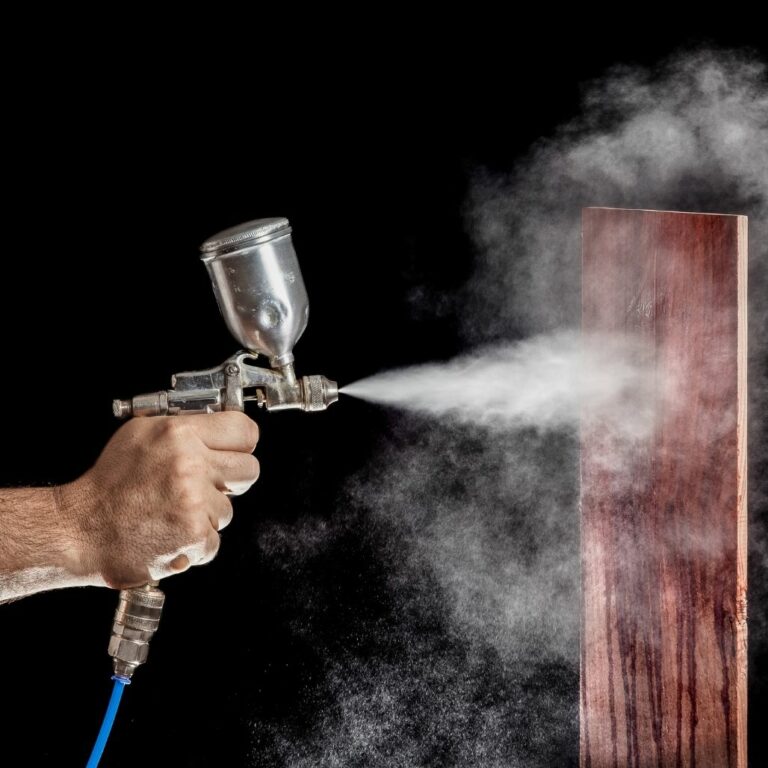Symptoms of Inhaling Paint Fumes
Published by Harmony Lab & Safety Supplies on Jan 09, 2024
Stuck inside for so long, it may seem like your place needs a fresh coat of paint. A new color can transform your room and is an easy, beginner-friendly renovation task. Although painting may seem deceptively simple, taking proper preventative steps to protect your health and wellness is essential. Paint fumes can cause severe short-term side effects without addressing the downsides, spiraling into serious health concerns when left unaddressed.
Are paint fumes harmful to inhale?
Yes, inhaling paint fumes can be harmful to health, as they often contain volatile organic compounds (VOCs) and other toxic substances. Short-term exposure to these fumes can cause headaches, dizziness, and irritation of the eyes, nose, and throat. Prolonged or repeated exposure can lead to more serious health issues like respiratory problems, kidney damage, and even central nervous system damage.
What is in paint fumes?
The process that causes you to smell paint is the same in new cars. The newly minted plastic materials and adhesives leak organic material through a process known as off-gassing. In your home, portions of the paint evaporate when the paint dries from a liquid into a solid layer. You may have noticed that wet paint smells much more potent than dry paint, which is why. Although you may not smell the paint fumes after 3-5 days, there is a question as to whether the color still emits harmful vapors that are not detectable to the human nose.
If you do not purchase indoor paint without VOCs, these volatile organic compounds will undoubtedly leak and linger in the air.
Beware – Even if you are not painting a room, simply using model or hobby paint can also emit troubling VOC levels. Paints, solvents, and resins all can off-gas VOCs and cause respiratory problems.
The solvents present in the paint can emit a variety of VOCs, including:
- Toluene
- Xylene
- Ethanol
- Benzene
- Dichloromethane
- Formaldehyde
- Trichloroethylene
- Propylene glycol
- Glycol ethers
- Styrene
- Acetone
- Pesticides
When is it safe to go back to a freshly painted room?
Two to three days should be enough for the paint to dry. Check to ensure adequate airflow allows the fumes to escape. After several days, consider further air purification measures, such as a HEPA filter attached to a box fan. Children, the elderly, and those with breathing conditions should proceed cautiously. It is best to consider painting projects outside of extreme temperature seasons such as winter and summer. The requirements should be mild enough to allow open windows and fans.
The type of paint used determines the level of fumes lingering in your space. A more caustic paint will stay for longer. Always consult your paint professional and ask for VOC-free colors made for indoor use. A landlord or building manager may be able to advise on the ideal paint for the structure of your building. The wrong paint could seep fumes into a neighboring unit.
Prevent the Negative Effects of Paint Fumes
Wearing a respirator mask to paint a single room may seem ridiculous. But the chemicals in paint can cause immediate side effects such as headaches, nausea, vomiting, eye-watering, dizziness, uncontrollable coughing, and shortness of breath. Immediate problems related to breathing can be addressed by leaving the room and getting fresh air immediately, as recommended by the Consumer Product Safety Commission (CPSC). People who paint for a living or hobby must consider adequate respiratory protection. Chronic exposure can cause severe lung damage, cancer, and liver and kidney problems. Read about more respirator mask ratings and filters here.
Top 3 Reusable Respirators for Paint Fumes
1. 3M 6000 Series Half Face Respirator + 3M 60926 Multi Gas/Vapor Cartridge
This respirator combo provides a comfortable fit at an affordable price. The 3M 60926 cartridge filters out plastic particulates and plastic fumes to prevent respiratory risks.
2. Honeywell North 5500 Half Face Respirator + Honeywell North 75SCP100 Multi-Purpose Cartridge & Filter Combo
This combination is specifically designed for high filtration efficiency, providing a secure seal and comfort for extended wear. Ideal for environments where plastic inhalation is a risk, this setup ensures safety without compromising on usability. It offers comfortable yet robust protection against plastic fumes and other hazardous pollutants.
3. 3M 7500 Series Premium Half Face Respirator + 3M 60926 Multi Gas/Vapor Cartridge
Featuring a comfortable and durable design, this 3M combo is specifically engineered for effective filtration of hazardous gases and vapors. This combination is perfect for workers in industries dealing with a broad range of hazards including paint and plastic fumes.
Conclusion
Whether you picked up painting as a hobby or are using a spare room, protecting your lungs and the health of those around you from toxic chemicals should be your first priority.
At Harmony Lab & Safety Supplies, we have decades of experience providing people with the safety gear and resources they need to stay protected and prepared. Find the respiratory protection you need.
